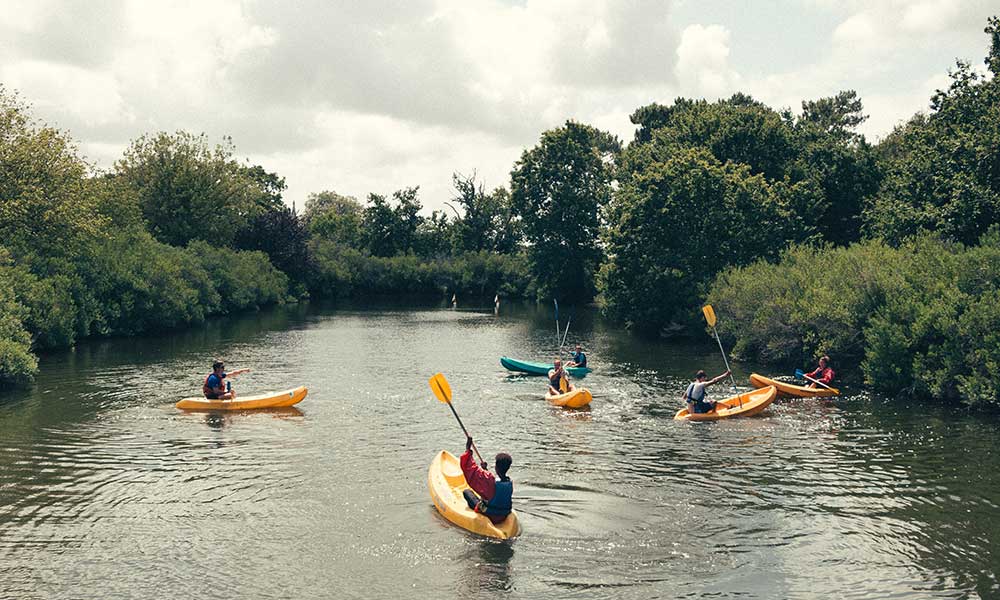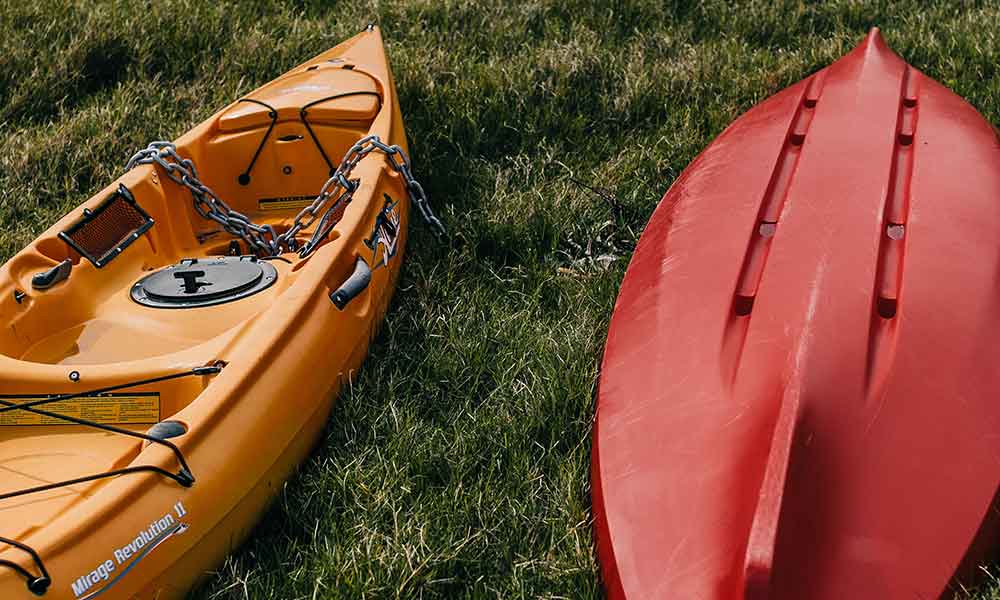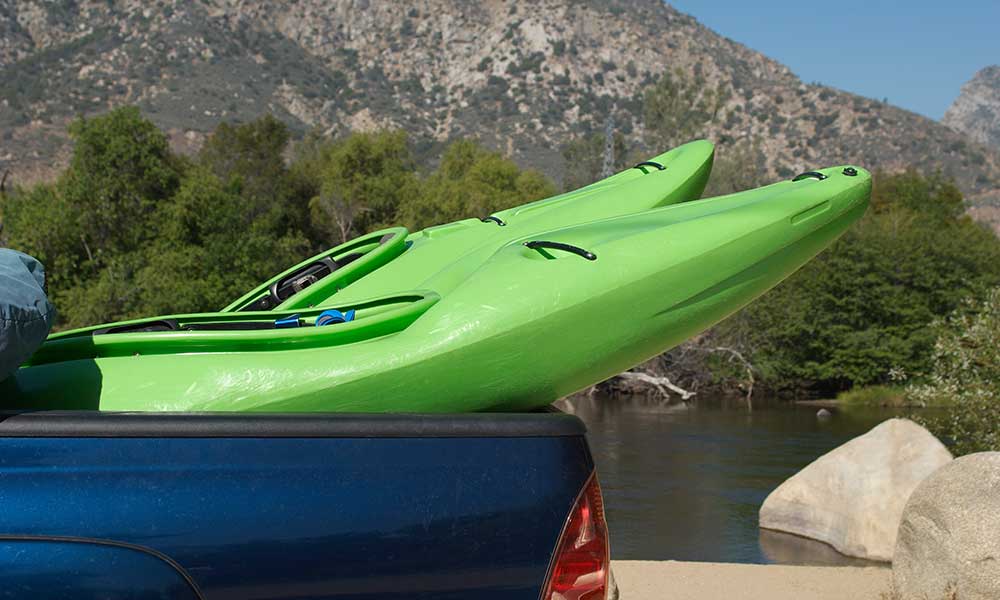The kayak paddle is the primary means of propulsion on this watercraft, so it is important that you select a paddle that is suitable and comfortable to use. Many new kayak users are not aware of the importance of selecting the right paddle, only to find they have purchased the wrong type and length paddle for their kayak.
Choosing a kayak paddle incorporates sizing the paddle correctly for your stature and kayak width. The selection strategy includes the material the paddle shaft is made from, the shape and diameter of the shaft, and the blade shape and orientation. The right paddle improves comfort and safety.
Selecting a kayak paddle involves taking several contributing factors into consideration. Your physical stature, kayak, and type of waters you kayak in will play a role in your kayak paddle selection. We will help you navigate these criteria to get the best paddle for your requirements.
Why is Kayak Paddle Size Important?
Your kayak paddle is the means by which your will control, maneuver, and propel your kayak, which means it is a crucial part of your kayaking experience.
Selecting the incorrect paddle can result in the following consequences when using the paddle out n the water in your kayak.
- Fatigue. A kayak paddle of the wrong length, blade style, and material can lead to the kayaker becoming fatigued very quickly when using the paddle.
- Discomfort using the paddle. Sore hands, wrists, and shoulders can result from an incorrectly sized paddle. Your hands could also rub on the sides of the kayak, resulting in discomfort.
- Lack of control of the kayak. Since the paddle is the primary method of controlling the kayak, a paddle that is ill-suited will not give you the best control over the maneuverability and propulsion of the kayak.
- Experience level. Choosing a paddle that is too advanced for your skill level may result in difficulty staying upright or negotiating rough waters in the kayak.
The consequences for choosing the wrong paddle for your kayaking can make the difference between an enjoyable and safe kayaking experience or a troublesome, difficult experience out on the water.
How To Choose the Correct Kayak Paddle
There are several aspects to choosing a paddle for your kayak, and you may be surprised at the options available for you to choose from. Many people new to kayaking are under the misconception that a paddle is just a paddle, so any type of paddle will do.
This limited view comes from a lack of understanding of the importance of selecting the right paddle for the job. To begin the selection process, you need to consider the following options and criteria.
- Your physical stature.
- The width of your kayak.
- The paddle length.
- The shaft material and style.
- The blade shape and orientation.
The combination of making the correct selection in each of these criteria will determine the best paddle for you and your kayaking purposes.
How To Size The Kayak Paddle Correctly
There are two main methods for determining the right paddle length for you. Both methods take body and kayak measurements into account and then reference a paddle sizing chart to select the correct length paddle.
We recommend trying both methods and comparing the recommended size with each method. You can then select a paddle length somewhere in the middle of the two recommendations for the best starting length for your paddle.
Method 1 To Establish Kayak Paddle Length
The first method involves measuring your torso height, which represents the height your shoulders will be above the water level.
Tilt your head forward to find the bump of the vertebra where your neck meets your shoulders. This will be the starting point of the measurement. Stand in a relaxed posture with your hands on your hips and your thumbs horizontal along your back.
Ask someone to measure the height from your vertebra at the base of your neck to the line your thumbs make across your lower back.
| Determine Paddle Length By Torso Height | |
| Torso Length | Suggested Paddle Length |
| 22 inches (55.8cm) | 70.8 inches (180cm) |
| 24 inches (60.96cm) | 70.8 – 78.74 inches (180 – 200cm) |
| 26 inches (66.04cm) | 74.8 – 82.67 inches (190 – 210cm) |
| 28 inches ( 71.12cm) | 78.74 – 86.61 inches (200 – 220cm) |
| 32 inches (81.28cm) | 86.61 – 94.48 inches (220 – 240cm) |
| 34 inches (86.36cm) | 90.55 – 98.42 inches (230 – 250cm) |
| 36 inches (91.44cm) | 94.48 – 98.42 inches (240 – 250cm) |
| 38 inches (96.52cm) | 98.42 inches (250cm) |
Method 2 To Establish Kayak Paddle Length
This method takes into account your height and the width of your kayak, which is why it is important to check the recommendations from both methods and then select a paddle length between both recommendations.
You will need your height measurement and the width of your kayak to consult the corresponding paddle length table.
Take a measurement of your kayak’s width at its widest point. According to the following table, you now have the two measurements needed to determine paddle length.
| Determining Paddle Length By Height And Kayak Width | ||
| Your Height | Kayak Width | Recommended Paddle Length |
| 5 foot 5 inches or shorter (165.1cm) | 23 inches or smaller | 82.67 inches (210cm) |
| 24 – 32 inches | 86.61 inches (220cm) | |
| 29 -33 inches | 90.55 inches (230cm) | |
| 34 inches or wider | 94.48 inches (240cm) | |
| 5 foot 5 inches – 5 feet 11 inches (165.1 – 180.34cm) | 23 inches or smaller | 90.55 inches (230cm) |
| 24 – 32 inches | 94.48 inches (240cm) | |
| 29 -33 inches | 98.42 inches (250cm) | |
| 34 inches or wider | 102.36 inches (260cm) | |
| 6 foot or taller (182.88cm) | 23 inches or smaller | 86.61 inches (220cm) |
| 24 – 32 inches | 90.55 inches (230cm) | |
| 29 -33 inches | 98.42 inches (250cm) | |
| 34 inches or wider | 102.36 inches (260cm) |
Choosing Kayak Paddle Shaft Shape And Material
The paddle shaft length is not the only metric to consider when selecting a kayak paddle. The diameter of the shaft, the weight of the shaft, and the cost of the material.
The main paddle shaft types of paddle shafts include the following.
- Aluminum. These paddle shafts are durable and cost-effective but are heavy.
- Plastic. Plastic shafts are generally lightweight, durable, and affordable, making them a great beginner choice.
- Graphite. Graphite or carbon fiber are expensive paddles, but the cost is worthwhile for their durability and extreme lightweight.
- Fiberglass. Fiberglass shafts are a good choice because they are strong, lightweight, and more affordable than similar lightweight materials.
- Wood. These paddle shafts are expensive, require more care, and are less common than most other shaft types.
The shaft can also be straight or have kinks in the shaft where your hands are positioned. The shaft style will depend on which one feels more comfortable in your hand. The kinked shafts allow a straighter wrist throughout the movement of the paddle stroke, which may be beneficial for people with wrist problems.
Choosing A Kayak Paddle Blade Shape And Orientation?
Many paddle blade shapes are available, including wide blades, narrow blades, asymmetric blades, wing blades, and dihedral blades.
Wide blades provide a lot of power but can be tiring to operate for long periods. Narrow blades have less power for forward motion be produce less fatigue when used for long periods.
Asymmetric blades are where the top of the paddle blade is not the same size as the bottom section of the blade. These blad types are more appropriate for a shallow paddling action.
Wing paddles are scooped, hydrodynamically designed paddles generally used exclusively for kayak racing.
Dihedral blades have a raised central strip down the length of the blade, evenly distributing the water on both the upper and lower sections of the blade. This makes for less resistance and a good level of forward power but provides less stability, making maneuvering the kayak more difficult with these blades.
The feathering of the blades is also an important consideration. The refers to the difference in the angle or twist of the paddle blades in relation to each other. The choice of feathering is usually a personal preference, although feathered blades offer less wind resistance and are preferred for racing. Some kayak paddles have adjustable feathering, so you can set the angle to your preference.
Conclusion
As we have demonstrated, a kayak paddle is not a one-size-fits-all deal, and sizing the paddle correctly and selecting the best features for your kayaking needs is as crucial as selecting the right kayak!
The best way to find the most suitable and comfortable kayak paddle is to try out a few different types and styles till your find one that you feel most comfortable with. You can also have several different paddles in your collection and choose the best one for the conditions you will be facing on the water that day!







